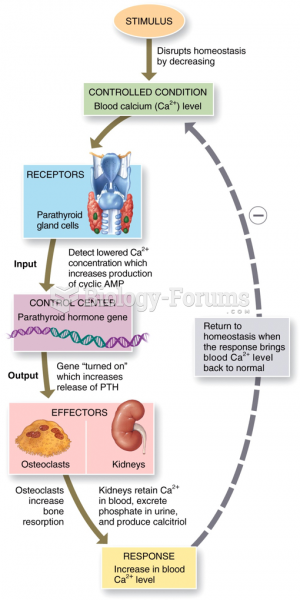This topic contains a solution. Click here to go to the answer
|
|
|
Did you know?
The highest suicide rate in the United States is among people ages 65 years and older. Almost 15% of people in this age group commit suicide every year.
Did you know?
There are approximately 3 million unintended pregnancies in the United States each year.
Did you know?
The U.S. Pharmacopeia Medication Errors Reporting Program states that approximately 50% of all medication errors involve insulin.
Did you know?
The human body produces and destroys 15 million blood cells every second.
Did you know?
Cyanide works by making the human body unable to use oxygen.







